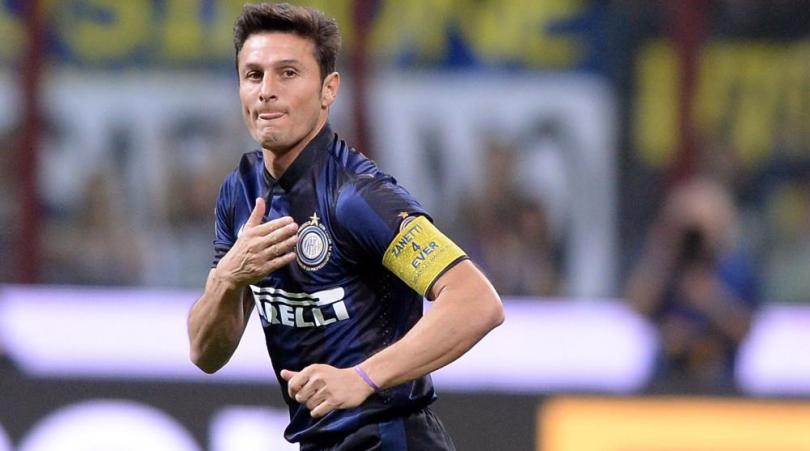Underdogs & overreactions: what do the opening days of Copa America tell us?
Vexing: â¨â¨The best adjective to describe what has happened in the first round of games in the 2011 Copa America. â¨â¨
The curious sequence of events commenced late on Friday night, as Argentina - the hosts and favourites - shaped up to brush aside footballing minnows and mountain-dwellers Bolivia in La Plata.
While most had predicted a four or five goal victory for the Albiceleste, it was more a case of them being at sixes and sevens, as a disjointed side failed to provide much to write home about in a scrappy 1-1 draw against their northern neighbours. â¨â¨
In truth, it could have been even worse. While BoliviaâÂÂs goal was principally down to a piece of defending as inexplicable as it was bad â Ever Banega simply losing all control of his legs and neglecting to clear a hopeful flick off the line â the âÂÂverdeâ had a wonderful chance to make it 2-0 through Marcelo Moreno, a goal that probably would have sent the host nation to their most embarrassing result since, well, since they last played Bolivia, actually...â¨â¨
Sergio AgueroâÂÂs stunning equaliser may have saved some embarrassment for âÂÂChechoâ BatistaâÂÂs side, but the result was still presented as if it had been a defeat by the local media, whose reaction was as excessive as it was predictable. â¨â¨
Shaking off the tournament favourites tag was never going to be easy, not least with the pressure of 18 trophyless years weighing down on their shoulders, and this is only magnified by sensationalist sports dailies, from where it is consumed, and then regurgitated by the masses. â¨â¨
ThereâÂÂs no respite either, for Sergio Batista, the Argentine coach. This blog has dealt previously with his forthright ambition of building a side based on Barcelona, and this has given him some issues in the wake of FridayâÂÂs performance.â¨â¨
Get FourFourTwo Newsletter
The best features, fun and footballing quizzes, straight to your inbox every week.
A display with all the fluidity of a breezeblock was more catastrophic than it was Catalan, with a midfield trio which had previously been touted as âÂÂtoo defensiveâ turning out to be just that. But Batista has since shown little if any willingness to change it. â¨â¨
By setting out his stall in such an ambitious manner, heâÂÂs given his would-be critics in the media the rope with which to hang him. His best, and possibly only hope of survival and frantically engineering himself some breathing space would be by getting a result against Colombia.â¨â¨
But winning against a side that puts ten men behind the ball isnâÂÂt easy â just ask the countless teams who have tried and failed to do so in recent years.
It has become a regular feature of major tournaments for minnows facing a giant of the world game to put everything between the ball and their goal in the hope of holding out and possibly even nicking something at the other end.â¨â¨
There is nothing wrong with this.â¨â¨ Really, the top teams need to be prepared for it, and play in a way that enables them to overcome it. In the same way that Jose Mourinho deployed Pepe, a defender, in midfield to attempt to deal with Lionel Messi in the spate of 2011 âÂÂclasicosâÂÂ, Argentina should perhaps have played a more attacking players against a side they knew would look to sit back.â¨â¨
But they werenâÂÂt the first team to make such a mistake, and they wonâÂÂt be the last. Indeed, Brazil followed suit two days later.â¨â¨
Brazil came up against a Venezuela side playing in a similar withdrawn fashion, and a disjointed display from A Selecao meant that they too could only take a point from their opening group stage fixture. â¨â¨
It has to be said that the Samba Boys created more chances than Argentina did, but the man-of-the-moment, Neymar spurned at least two excellent opportunities and Alexandre Pato nigh on annihilated the cross bar with a right-footed cruise missile.
â¨â¨The reaction in Rio de Janeiro and Sao Paolo on Sunday was much the same as in Argentina on Friday - an emotion half-way between disappointment and embarrassment that in both cases fails to acknowledge how far some of their lesser-heralded South American nations have come. â¨â¨Uruguay had the benefit of seeing these shocks, and didnâÂÂt underestimate Peru, but the âÂÂRojiblancaâ showed more verve and attacking intent than either the Venezuelans or the Bolivians.
Like the the opening day surprise packages, Peru took the lead. This wasnâÂÂt like Rojasâ Bolivia goal â fortuitous and vaguely comical â it was as impeccably timed an attacking run as you could hope to see, followed by a composed finish from Jose Paolo Guererro. â¨â¨
Fresh from a third place in the World Cup last summer, Uruguay didnâÂÂt take it lying down, and they fought well, dominating possession and eventually also taking a draw from their first game of the Copa.â¨â¨
Even much-fancied Chile had a serious scare, they exerted total domination over a massively under-strength Mexico, yet trailed. Fortunately for Claudio Borghi and his men, they managed to do what the big guns hadnâÂÂt and turn the game on its head. Mexico werenâÂÂt as defensive as some of the other sides and, regrettably perhaps, their swashbuckling spirit was part of their undoing.â¨â¨
With the three favourites faltering early on in the competition, there are several possible conclusions to draw.
It could be that these nations are simply overhyped, it could be that the âÂÂsmaller sidesâ are underrated and ill-appreciated, or it may have just been a classic start to a tournament, with defensive blunders and upsets (remember Senegal beating France at the 2002 World Cup, anyone?).
The important thing to remember is that nobody is out yet, one of these sides will probably go on to win the tournament, and then weâÂÂll see the same journalists that call for blood now, lauding the genius of it all in a months time. Vexing.
